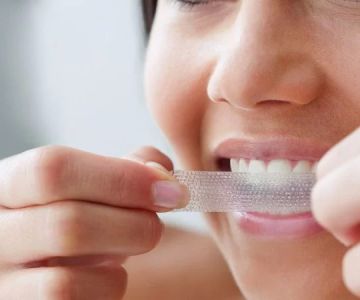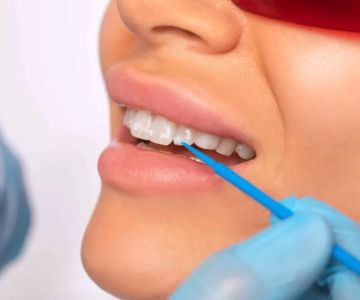- 1-Why-Flossing-Is-Essential-for-Oral-Health
- 2-How-Flossing-Prevents-Gum-Disease-and-Tooth-Decay
- 3-Benefits-of-Daily-Flossing-for-Long-Term-Dental-Care
- 4-Correct-Flossing-Techniques-to-Maximize-Effectiveness
- 5-Common-Flossing-Mistakes-to-Avoid-for-Best-Results
- 6-Incorporating-Flossing-Into-Your-Daily-Routine-Easily
1. Why Flossing Is Essential for Oral Health
The importance of regular flossing cannot be overstated when it comes to maintaining optimal oral hygiene. While brushing your teeth removes surface plaque, flossing reaches the tight spaces between teeth where toothbrushes often miss. These areas are breeding grounds for bacteria, which can lead to plaque buildup and, eventually, gum disease.
Regular flossing removes trapped food particles and bacteria, reducing the risk of cavities and keeping your gums healthy. Dental professionals consistently recommend flossing as a critical step in daily oral care routines.
2. How Flossing Prevents Gum Disease and Tooth Decay
Gum disease, or periodontal disease, is often caused by plaque and tartar accumulation along the gumline. Flossing disrupts this buildup, preventing inflammation and bleeding gums. Over time, untreated gum disease can lead to tooth loss and even affect overall health.
In addition to gum health, flossing helps prevent tooth decay by clearing debris that can cause enamel erosion between teeth. This dual protection highlights the vital role flossing plays in preventing dental problems.
3. Benefits of Daily Flossing for Long-Term Dental Care
Incorporating flossing into your daily oral care routine offers long-term benefits including fresher breath, reduced plaque, and a lower risk of oral infections. Many studies have linked consistent flossing with better overall dental health and fewer costly dental procedures.
For instance, individuals who floss regularly tend to maintain stronger gums and fewer cavities as they age, contributing to a healthier, more confident smile.
4. Correct Flossing Techniques to Maximize Effectiveness
To reap the full benefits, it’s important to use proper flossing techniques. Gently curve the floss around each tooth in a C-shape and slide it beneath the gumline, moving up and down to remove plaque without damaging gums.
Rushing or snapping the floss can cause irritation or injury, so patience and gentle motion are key. Watching tutorial videos or consulting your dentist can help improve your flossing skills.
5. Common Flossing Mistakes to Avoid for Best Results
Many people make mistakes such as flossing too aggressively, missing back teeth, or skipping flossing altogether. These habits reduce effectiveness and can lead to gum damage.
Also, using the same floss segment for multiple teeth spreads bacteria instead of removing it. Switching to a fresh segment for each tooth ensures cleanliness and better oral health outcomes.
6. Incorporating Flossing Into Your Daily Routine Easily
Making flossing a daily habit can be simple by choosing convenient tools like floss picks or water flossers. Setting reminders or pairing flossing with other daily habits such as brushing can reinforce consistency.
Creating a positive mindset around flossing by understanding its importance motivates regular practice. Over time, it becomes an effortless part of your dental care regimen.
Enhance Your Oral Health with Regular Flossing
The importance of regular flossing lies in its ability to protect your teeth and gums from common dental problems. By mastering proper techniques and integrating flossing into your daily routine, you invest in a healthier smile and overall wellness.
For personalized advice, trusted dental products, and expert care, visit Dentistry Toothtruth. Their comprehensive resources support you in achieving optimal oral hygiene through effective flossing and beyond.







 Palm Valley Orthodontics5.0 (3 review)
Palm Valley Orthodontics5.0 (3 review) Berg Dental Group4.0 (70 review)
Berg Dental Group4.0 (70 review) McCartin Christopher DMD5.0 (118 review)
McCartin Christopher DMD5.0 (118 review) Comprehensive Dental Group4.0 (193 review)
Comprehensive Dental Group4.0 (193 review) Familia Dental4.0 (458 review)
Familia Dental4.0 (458 review) Lakes Orthodontics5.0 (181 review)
Lakes Orthodontics5.0 (181 review) The Importance of Oral Health Education During Pregnancy for a Healthy Pregnancy
The Importance of Oral Health Education During Pregnancy for a Healthy Pregnancy Best Tips for Brushing Your Teeth Properly for Healthy Gums: Essential Techniques for Oral Health
Best Tips for Brushing Your Teeth Properly for Healthy Gums: Essential Techniques for Oral Health Why Skipping Dental Checkups Can Lead to Bigger Oral Health Problems
Why Skipping Dental Checkups Can Lead to Bigger Oral Health Problems Advantages of Porcelain Dental Restorations
Advantages of Porcelain Dental Restorations How Can Diabetes Cause Tooth and Gum Problems? Preventing and Managing Oral Health Issues
How Can Diabetes Cause Tooth and Gum Problems? Preventing and Managing Oral Health Issues Healthy Habits for Promoting Good Oral Health and Hygiene: Tips for a Healthy Smile
Healthy Habits for Promoting Good Oral Health and Hygiene: Tips for a Healthy Smile